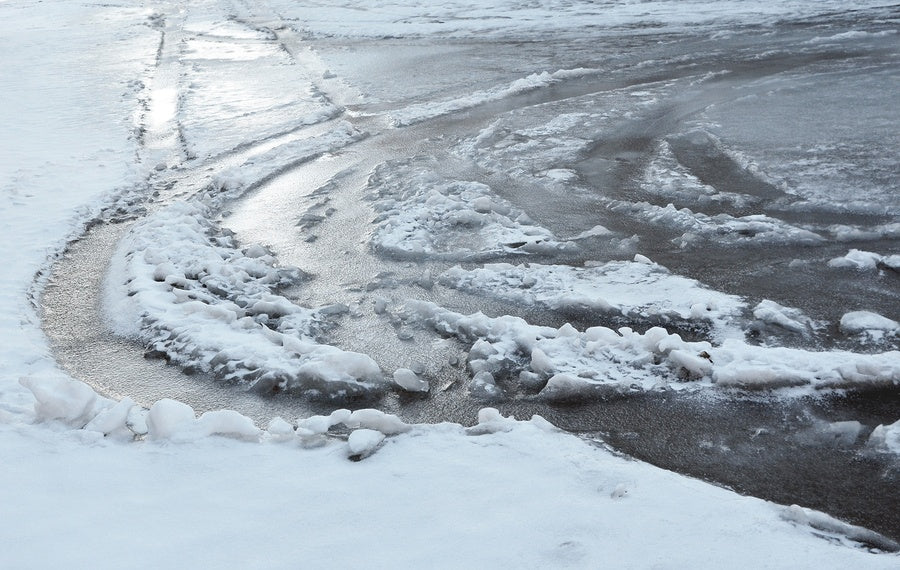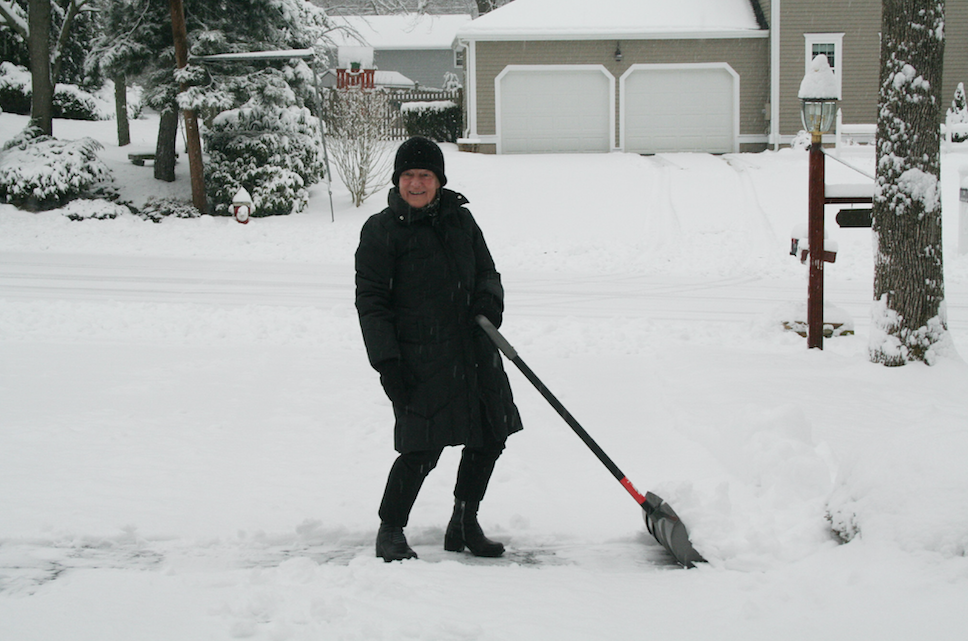
Winter inevitably brings with it the danger of encountering black ice as you drive out on the public highways, and the last thing you need is for black ice to "follow you home" and make pulling into/out of or stepping on your own driveway a danger-fraught act.
Black ice forms on pavements whenever snow melt-off refreezes in extraordinarily thin sheets over the surface. Winter's ordinary freeze-thaw cycle can cause this to happen, but shoveling your drive can also aid its formation if done at the wrong time of day. Removing snow in the morning gives the sun a chance to work on the pavement, but removing it later in the day might give black ice a chance to form. Driving or walking on your driveway without removing the snow first can also aid black ice formation by compacting the snow and pushing ice crystals into the pavement's porous surface.
Despite your best efforts to prevent it, black ice may still become a problem on your driveway, especially if your driveway is well shaded and you live in a snow-prone area of the country.
Below, we mention three approaches to ridding your driveway of black ice and keeping it from making a reappearance:
Mechanical and Chemical Removal
Many times, the sun will loosen up black ice for you (if not melt it completely away), and all that need be done is to scoop it up with a snow shovel or chip at it with an ice pick. Great care must be exercised, however, not to damage your pavement, and all black ice removal will not be this simple.
Rock salt (sodium chloride) is the most commonly used deicer on home pavements, but it only melts ice effectively down to 15º F (-9.44° C). For lower-temperature melting, you can use calcium chloride instead, which melts effectively to around -10º F (-23.33° C).
Finally, to prevent ice from forming to begin with, salt brine can be applied to your driveway, particularly just before a major storm to keep the snow from sticking. A water-salt mixture that is 23% sodium chloride is considered by many to be the ideal ratio and can be effective down to -5º F (-20.56° C).
There are some major drawbacks to deicers, however. They can shorten the lifespan of your concrete/asphalt, harm plant life along the driveway's edge, and seep into local ground water supplies, hurting the environment.
Installing a Heated Driveway
On driveways that struggle with black ice every single winter, it may be worthwhile to install a heated driveway system that will effortlessly melt it away. Either the whole drive, a major section of it, or only the tire lanes can be heated, and controls can be either manual or automatic. Automatic controls can be set to respond to low temperatures or made to follow a pre-set daily/weekly schedule.
There are two types of heated driveway to choose between: hydronic and electric. Hydronic involves pumping a heated water-antifreeze solution through plastic tubing installed below the pavement (which is typically concrete). An electric coil heated driveway uses electricity from an ordinary outlet to heat metal rods that are integrated into your driveway. (Electric systems are more often used on asphalt drives.)
The convenience of heated driveways is unquestionable, but they also represent a significant cost. Normally, you will have to tear out your old pavement and replace it in order to install a heated driveway, which comes out to an average expense of around $8,000 (approximately $10,752 CAD). Overall, hydronic systems cost more to install, while electric heated driveways cost more to operate.
Snow-Melting Mats
A much more portable snow-melt system that requires much less investment than a heated driveway and still avoids the damage that deicers can do is found in snow-melting mats.
Heated driveway mats have the strength to withstand the weight of a vehicle and can be driven on. The slip-resistant rubber with a central heating element is capable of melting several inches of snow per hour. Snow-melting mats also maintain an ice/snow free area that disallows melt-off from refreezing into black ice.
Black ice is a very real wintertime danger in many parts of the U.S., and learning how to best prevent and remove it will help your home (and your driveway) be both safer and more convenient to use.

